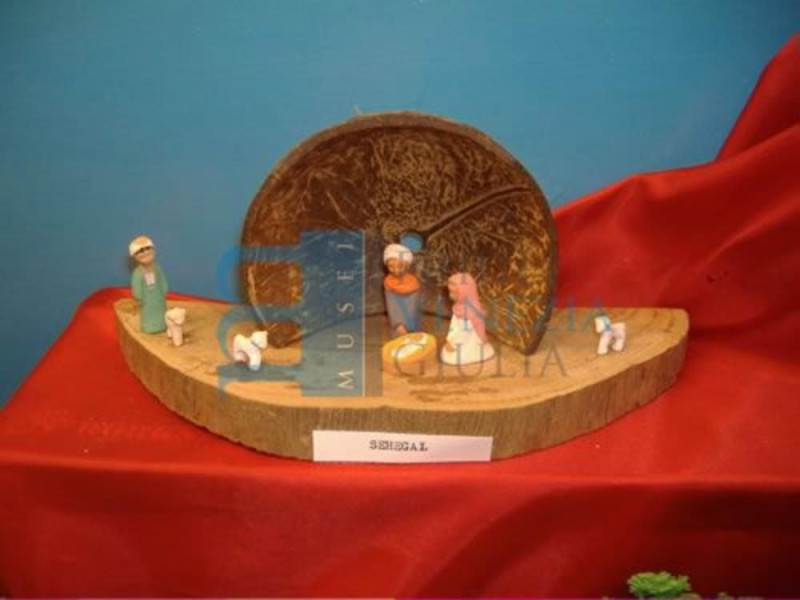Destinazioni - Comune
Muggia
Where
Muggia (Trieste)
Muggia (Slovene: Milje, German: Mulgs, Friulian: Mugle) is an Italian comune in the extreme south-east of the Province of Trieste in the region of Friuli-Venezia Giulia lying on the border with Slovenia.
Muggia rests on the last stretch of Istria still within Italian territory, after the dissolution of the Free Territory of Trieste in 1954 ceded the bulk of Istria to then Yugoslavia (now divided between Slovenia and Croatia).
Its territory, limited on the sea-side by a shoreline of more than 7 kilometres (4 mi) featuring a coastal road of exceptional beauty and on the border side by a hill system, Monti di Muggia, including Mt. Castellier, Mt. S. Michele, Mt. Zuc and Monte d'Oro, that dominate over a vast landscape of Italian and Istrian coast, is characterized by a rich sub-continental vegetation of both Carsic and Istrian type.
It has a border crossing, known as San Bartolomeo, with Slovenia and the extreme west of the comune at Lazaretto. The Slovenian border crossing is called Lazaret in Koper municipality.
History
Muggia originated as a prehistoric fortified village (castelliere), around 8th-7th century BC. The territory was conquered in 178–177 BC by the Romans, who created here a settlement (Castrum Muglae). After the fall of the Western Roman Empire, Muggia was under Ostrogoth, Lombard, Byzantine, Avar and Frank dominations, until, in 931, king Hugh of Italy donated it to the Patriarch of Aquileia.
Before the year 1000 a new settlement was built on the seashore, initially named the Village of the Laurel and then Muglae->Muglia->Mulia->Muia->Muggia (muglia seems to be an ancient place-name meaning "coastal swamp"). After the 13th century the new village, now grown to the status of city, pronounced itself a municipality and defined its territory as bordering with those of Trieste and Koper (Italian Capodistria), but stayed still politically bound to the Patriarchy of Aquileia. From this period are the cathedral and the city hall, the latter having been rebuilt in the last century. Having passed eventually in 1420 under the Republic of Venice, Muggia shared thereafter the fates of the Serenissima.
After the latter's fall in 1797, it became part of the Austrian Empire, under which it developed an important naval shipbuilding industry which flourished until after World War II. Throughout the Austro-Hungarian, it remained part of the Margravate of Istria, first within the Kingdom of Illyria and then, after 1861, under the Austrian Littoral. The municipality of Muggia extended souther than nowadays, including several settlements that are now part of Slovenia: Ankaran (Ancarano), Hrvatini (Crevatini), Jelarji (Elleri), Škofije, and Plavje. According to the last Austrian census of 1910, around a fifth of the municipality's population was ethnically Slovene, while the rest were mostly Italians.
After World War One, the town was annexed to Italy and incorporated into the Province of Trieste. In the 1930s, the area developed a strong Communist underground activity against the Fascist regime. In 1945, it was shortly occupied by the Yugoslav Army. Until 1954, it was part of the Free Territory of Trieste.
Main sights
Muggia provides many evident traces of its Venetian traditions and origin, as showed by the dialect, the gastronomic traditions, the gothic-venetian style of some houses, the devious "calli", the loggias, the ogive arches, the ancient coats of arms on the façades but mostly the main square, a true Venetian "campiello".
Memories of its early ages include an important pre-historic "castelliere" on Mt. Castellier (S. Barbara) and Roman (Archaeological Park of Castrum Muglae) and medieval remains in Muggia Vecchia (Old Muggia), once one of the guarding castles that in the 10th century were built to defend the Istrian border against the invasion of the Hungars.
The Castle of Muggia, destroyed in 1353 by the Triestines, retains several remains of the previous period such as the ruins of the walls. A tower dating back to 1374 was due to the Patriarch of Aquileia Marquard of Muggia. Later in 1735, under the government of the Republic of Venice, it was restored, but it was totally abandoned during the following century. The Castle was restored by its current owners, the sculptor Villi Bossi and his wife Gabriella, and may be visited upon request.
The most important art attraction is the little basilica of Santa Maria Assunta (10th-13th century), housing frescoes from the 14th-15th centuries.
Culture
Among the occurrences characterizing the socio-cultural life of this small city is well worth mentioning the Carnival of Muggia.
The Carnival absorbs much of the population of Muggia engaging them in the construction of allegoric carts articulated and moving in order to better mock the chosen victim and in the realization of gorgeous costumes. During those seven days the city becomes a true open-air theatre offering a continuous entertainment that previsibly climaxes in the great parade on the last Sunday.
International relations
Sister cities / Twin towns
Koper, Slovenia
Obervellach, Austria
Notable residents
Willer Bordon, politician
Villi Bossi, sculptor
Dario Hübner, football player
Vittorio Vidali, Communist activist, assassin, and politician
Muggia comune
Towns
Muggia
Villages
Boa
Lazzaretto
Villaggio Castalietto
See also
Istria
Venezia Giulia
Plavje
References
External links
Official website
Muggia town's Guide
Porto San Rocco Marina in Muggia

